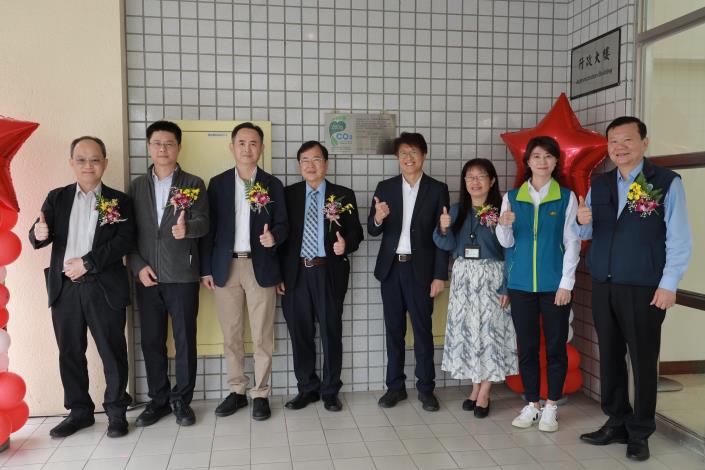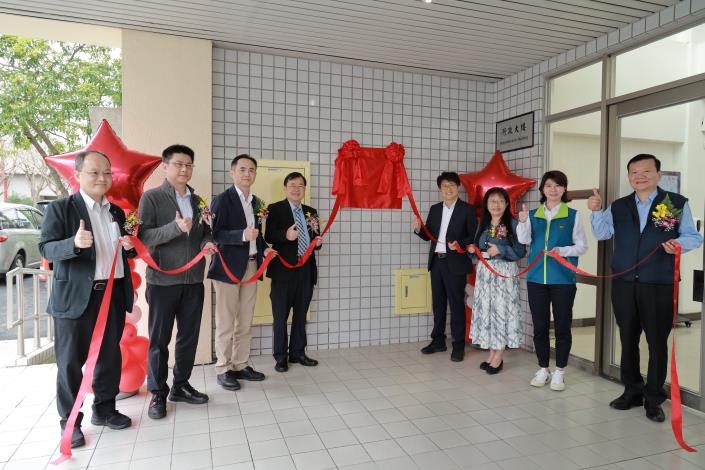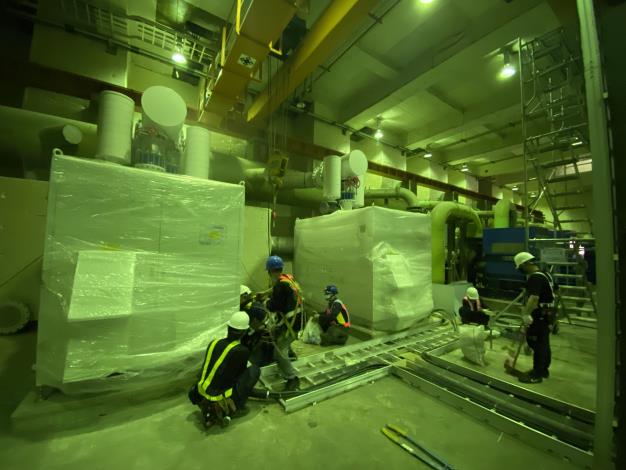The lowest carbon emission! Neihu Sewage Treatment Plant is disclosing its Carbon Footprint Certificate Tablet today
How many CO2 will be produced by treating 1 ton of sewage? In order to save energy and reduce carbon emission, the Sewerage Systems Office of TCG’s Public Works Department implemented the Carbon Footprint Reduction Project at Neihu Sewage Treatment Plant. After 1 year’s endeavor, the Neihu Plant received a certificate issued by a third-party accreditation institute and a Product Carbon Footprint Certificate issued by the Environmental Protection Agency of The Executive Yuan in February this year (2023). The Tablet Disclosure Ceremony is held today (27th) at Neihu Sewage Treatment Plant. SSO notes, within all the local governments, Taipei has the most comprehensive planning of sewerage systems; it has the soundest systems for maintaining sewage pipelines, for expanding their life spans, and for operating and managing sewage treatment plants; Taipei is the bellwether of the national sewerage infrastructure. Currently only 3 livelihood sewage treatment plants have been certified in the country, 2 of them belong to SSO. On top of all, the Neihu Plant has the lowest carbon emission: only 280g/m3 of treated sewage. SSO further notes, respective plants and stations of SSO have now gradually started replacement of facilities on a yearly basis; in the future, facilities will be replaced via the intelligent energy saving systems by adopting high-performance products and introducing control automation, for achieving power saving and carbon reduction; this signifies SSO’s determination to implement TCG’s energy saving and carbon reduction policy, and to endeavor carbon footprint reduction for sewage treatment plants. According to Kao Shu-Hui, Plant Manager to Neihu Sewage Treatment Plant, “main source of carbon emission in Neihu Plant is the power consumption at the treatment and service stages. Carbon Emission for power consumption of the entire plant is 88.23% of the total carbon emission in the life cycle. In the future, power efficiency will be increased via energy saving systems and automation for effective control of power using facilities. We expect to achieve a 10% target of carbon emission in the service lifecycle of sewage treatment plants within 5 years, for fulfilling the love for the nature, and for achieving a low-carbon society.”






![Taiwan.gov.tw [ open a new window]](/images/egov.png)
